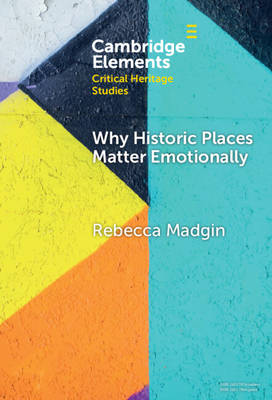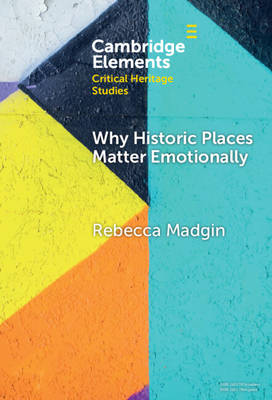
- Afhalen na 1 uur in een winkel met voorraad
- Gratis thuislevering in België vanaf € 30
- Ruim aanbod met 7 miljoen producten
- Afhalen na 1 uur in een winkel met voorraad
- Gratis thuislevering in België vanaf € 30
- Ruim aanbod met 7 miljoen producten
Zoeken
€ 104,95
+ 209 punten
Uitvoering
Omschrijving
This Element explores why historic urban places matter emotionally. To achieve this the Element develops a conceptual framework which breaks down the broad category of 'emotion' into three interrelated parts: 1. Emotional responses, 2. Emotional attachments, and 3. Emotional communities. In so doing new lines of enquiry are opened up including the reasons why certain emotional responses such as pride and fear are provoked by historic urban places; the complex interplay of the physical environment and everyday experiences in informing emotional attachments, as well as the reasons why emotional communities coalesce in particular historic urban places. In addition, the Element explores the ways in which emotion, in the form of responses, attachments, and communities, can be considered within heritage management and concludes with a discussion of where next for heritage theories and practices. This title is also available as Open Access on Cambridge Core.
Specificaties
Betrokkenen
- Auteur(s):
- Uitgeverij:
Inhoud
- Aantal bladzijden:
- 92
- Taal:
- Engels
- Reeks:
Eigenschappen
- Productcode (EAN):
- 9781009598521
- Verschijningsdatum:
- 13/11/2025
- Uitvoering:
- Hardcover
- Formaat:
- Genaaid
- Afmetingen:
- 152 mm x 229 mm
- Gewicht:
- 294 g

Alleen bij Standaard Boekhandel
+ 209 punten op je klantenkaart van Standaard Boekhandel
Beoordelingen
We publiceren alleen reviews die voldoen aan de voorwaarden voor reviews. Bekijk onze voorwaarden voor reviews.








